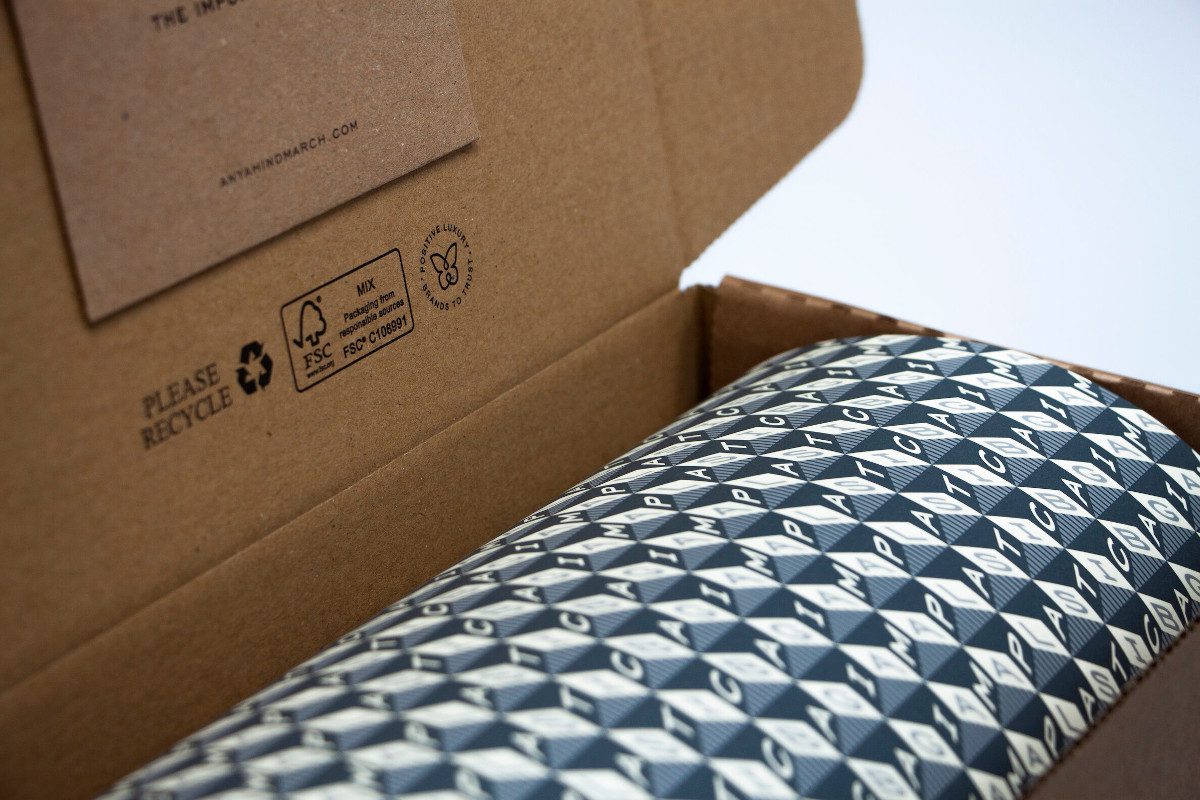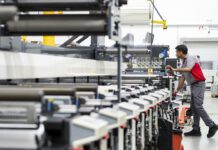
This Global Recycling Day (18 March), Robert Lockyer, CEO and founder of Delta Global, a sustainable packaging solutions provider for luxury fashion brands, discusses some of the ways in which he believes the industry is making great headway in terms of recyclability, as well as where more can still be done.
Over recent years, as greater attention has been given to the climate crisis, we have seen some brands take the necessary steps to combat the issue. However, as the industry’s focus now turns to recovery after what has been an incredibly difficult year, now is not the time to be pressing the breaks on any efforts in an attempt to save money and resources, or to cut corners for ease of business.
Rather, it has never been more important for the industry as a whole to take collective action towards a more sustainable future for the planet, business and consumers. And here are just some of ways companies are attempting to make headway, as well as what more can be done…
The rise of resale
The resale market is thriving. And while it is already strong, holding an estimated value of $7 billion, it is on a path of growth and on track to reaching a predicted $36 billion by 2024.
This is down to a number of things, with changing consumer behaviours one, and greater investment in the market by an increasing number of industry players who, traditionally, have remained solely in ‘new in’ sections. Most recently, this has involved moves such as luxury conglomerate, Kering, taking a 5% stake in resale platform, Vestiaire Collective, who just weeks earlier, had revealed a new partnership with Alexander McQueen, one of the group’s key houses.
These investments are providing consumers who are increasingly looking for ways to maximise their purchases and shop more sustainably, with greater accessibility to the resale market, without any of the associated risks, such as buying fake or replica items that are being passed off as authentic at premium prices.

Restoration
Restoration is another trend we are seeing in both consumer expectations and business models. The trend is suggesting a rise in demand for services and offerings which can restore old items in order to expand their lifespan and reduce the need for them to be replaced.
While this helps customers save money, which is only likely to be an increasing concern as the economic impact of the pandemic continues to be felt the world over, it also helps the growing number of environmentally conscious consumers to reduce their carbon footprints. In fact, according to The Waste and Resources Action Programme’s (WRAP) Sustainable Clothing Guide, by extending a product’s life by just nine months can reduce its carbon footprint by 30%.
And brands are beginning to listen. In response, we have seen Selfridges introduce a repairs concierge concession – The Restory – into its stores. The service covers colour, leather, cleaning and re-stitching, all of which can give a worn luxury item a new lease of life. Similarly, Hermes has a sizable team of repair specialists based at ateliers across Europe, Asia and the U.S., who can restore anything from large leather luggage bags to a small silk carré. And for evidence of demand for such services, the brand recorded close to 100,000 enquiries in 2019.
Similarly, in luxury jewellery, there is likely to be growing desirability for services which can repair and restore old pieces into items that suit today’s trends. This way, consumers are able to not only keep hold of sentimental jewellery items, but also give them new meaning and add to their story, before passing them down to the next generation.

Packaging
While brands make headway in their product and service offering, what is often forgotten is their packaging elements. Unfortunately, no matter how sustainable a product may be, it takes significant steps backwards if it is not contained in materials that uphold those same values.
Following research we conducted in 2020, we found that 88% of local councils in the UK do not accept polythene plastic bags at kerbside recyclable pick up. However, these bags are, by far, still the most popular materials used by brands to ship and deliver their online orders.
But as online shopping behaviours increase, the industry needs to rethink their practices. It is no longer acceptable for brands to turn a blind eye to the issue just because they think they are doing their bit by using, what they assume, are recyclable bags. In doing so, they are simply passing the problem onto their customers, who unknowingly put bags into the recycling, only for them to cause delay and disruption at recycling centres, where eventually they will be sent to landfill.
Instead, these businesses need to understand what is and is not permitted in their markets, as they vary across council districts, countries and continents.
Customer communication initiatives
Clearly, a lack of awareness among customers can cause significant roadblocks in the industry’s journey to become more sustainable. Therefore, collectively, brands need to work harder at educating their customers on what is and isn’t recyclable, how they are helping them to reduce their carbon footprints and other ways in which products can be used to promote circularity.
As well as better education on the polythene problem, this can include initiatives that encourage customers to make greater use of items or elements they would typically throw away in general waste bins after use.
For instance, investment into the quality and design of boxes, paired with communication regarding these efforts, can help encourage customers to reuse boxes and bags at home as storage, or in order to keep the items that came in them intact to uphold future resale value.
But as well as packaging, communication can also be geared towards encouraging reuse of products in DIY projects, for example, which would appeal perfectly to customers living life under lockdown restrictions, during which searches for all things ‘do it yourself’ have been peaking.
Product innovations
But the issue of recyclability shouldn’t just lie in the post-purchase stage where it becomes the customer’s responsibility. In order to really reach the targets set out by governments, the industry needs to rethink its production of products.
Again, we have seen brands such as Sweaty Betty, Nike and Anya Hindmarch use plastic waste in clothing material composition in order to reduce waste and resources and promote circularity.
Similarly, Hermes has recently revealed its lab-created mushroom-based leather which it will use to reimagine and increase the sustainability of its iconic Victoria travel bag.
Innovations such as these are a great reminder to others in the industry of the possibilities away from plastic. And while lessening the brands’ contribution to the climate crisis, they are also boosting their reputation among consumers who not only value sustainable offerings, but who are also compelled to such products due to their unique nature.
Supply chain
As well as material sourcing, innovations can also be used to improve recycling efforts in the rest of the supply chain too. For instance, by including activities which collect and manage waste, such as raw materials and fabric scraps that would otherwise end up on cutting room floors, and then landfill, processes can be optimised in order to reduce waste, or fed back into production lines to be used in other products.
Stuart Gannon, commercial director at Delta Global, explains: “Brands that are able to make use of waste materials during production stages are not only helping the planet, but also their own bottom lines.
“Ultimately, these activities will only help make processes more efficient by reducing the amount of resources required, which in turn saves the business money.
“If brands are able to collaborate with others in the market at these stages, there is even greater benefit. Utilizing waste packaging material within the network also offers further revenue streams and minimizes landfill.
“Recycling isn’t something that should just be left to consumers, but rather, a key focus for all steps within the supply chain.”
Government support
As well as collaboration between businesses at the industry level, making the intended impact will only be possible with governmental backed initiatives and support.
For instance, the plastic bag charge that is now a worldwide legal requirement has encouraged retailers to take significant steps towards improving their in-store packaging for the planet. Now, the same must be done for online shopping, as only with this change will more businesses realise the importance of improving their shipping and delivery offerings.
Other initiatives could include the placement of recycling bins in fashion stores or shopping centres, or even a kerbside pick-up initiative that strictly handles clothing waste.
Whatever the initiatives may be, the focus should remain on improving knowledge and awareness among consumers. While industry level initiatives, such as reporting and transparency are a good step forward, one of the most significant contributing factors is still between the point of end customer and landfill. It isn’t until the customer’s role in the circular economy is made clear and easier, that the issue can be resolved.
Undeniably, the industry has improved its efforts in sustainability by leaps and bounds, and it is certainly clear that more are beginning to understand the urgency of the crisis. However, there is still significant ground to cover if we are to truly combat the issue before irreversible damage is caused.
So, this Global Recycling Day, we urge brands to do better.






